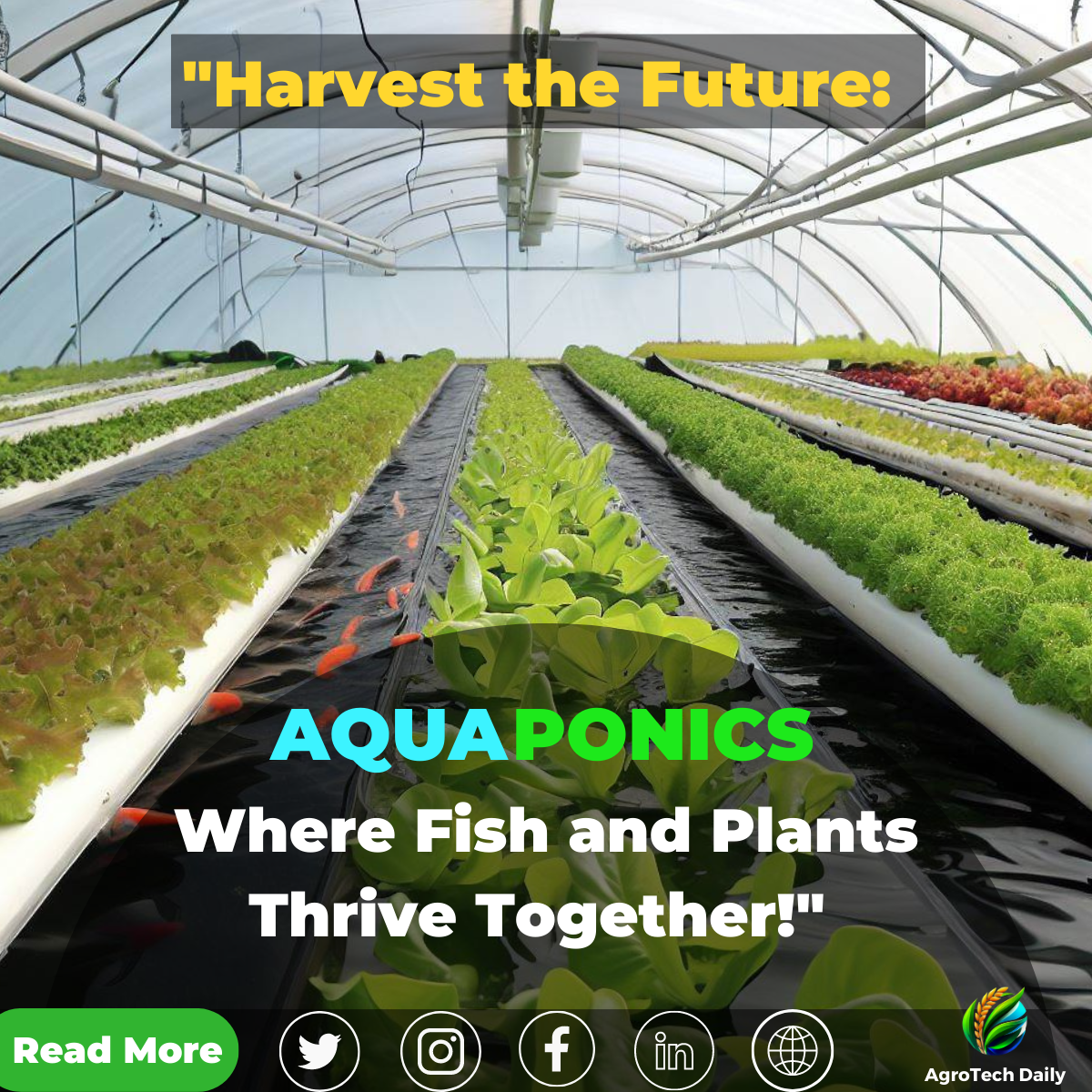Introduction:
In the realm of sustainable agriculture, aquaponics has emerged as a game-changing technique that seamlessly integrates fish farming and hydroponics. This innovative system creates a symbiotic relationship where fish waste provides essential nutrients for plants, while the plants purify the water for the fish. In this article, we will explore the fascinating world of aquaponics, its benefits, and its potential to revolutionize food production and environmental sustainability.
1. Understanding Aquaponics:
Aquaponics is a closed-loop ecosystem that combines aquaculture (fish farming) and hydroponics (soil-less plant cultivation). The process begins with fish being reared in a tank, where they produce waste rich in nutrients like ammonia. This waste, if left unchecked, could harm the fish. However, in aquaponics, the waste becomes a valuable resource.
2. The Symbiotic Relationship:
The fish waste, which contains ammonia, is converted by naturally occurring bacteria into nitrates, which are beneficial to plants. The nutrient-rich water is then circulated to the hydroponic section, where plants grow with their roots submerged in water or in a medium that provides support. As the plants absorb the nutrients, they purify the water, which is then recirculated back to the fish tank, creating a sustainable cycle.
3. Advantages of Aquaponics:
3.1 Resource Efficiency: Aquaponics optimizes resource usage by utilizing the nutrients from fish waste and recycling water within the system. It requires significantly less water compared to traditional soil-based farming, making it a water-efficient solution.
3.2 Increased Crop Yield: The symbiotic relationship between fish and plants in aquaponics promotes rapid and healthy growth. This results in higher crop yields compared to traditional farming methods.
3.3 Space Utilization: Aquaponics can be implemented in various settings, including urban environments with limited space. Vertical systems allow for maximum utilization of vertical space, making it an ideal choice for urban farming.
3.4 Nutrient-Dense Produce: The controlled environment of aquaponics ensures optimal nutrient availability, resulting in nutrient-dense and high-quality produce.
4. Types of Aquaponics Systems:
4.1 Media-Based Systems: Plants are grown in a medium such as gravel, clay pellets, or coconut coir, which provides support and acts as a biofilter.
4.2 Nutrient Film Technique (NFT) Systems: Plants are placed in channels where a thin film of nutrient-rich water flows over their roots.
4.3 Deep Water Culture (DWC) Systems: Plants are suspended in water, with their roots fully submerged, allowing for direct nutrient uptake.
5. Applications of Aquaponics:
Aquaponics has diverse applications ranging from home-scale systems to commercial operations. It can be utilized for producing a wide variety of crops, including leafy greens, herbs, strawberries, and even some fruiting plants. Furthermore, aquaponics can be integrated into educational programs to teach students about sustainable farming practices.
Conclusion:
Aquaponics represents a significant leap forward in sustainable agriculture, offering a closed-loop system that maximizes resource utilization and promotes efficient crop growth. With its potential for increased yields, water conservation, and nutrient-dense produce, aquaponics holds promise for addressing food security challenges and mitigating environmental impacts. By embracing this innovative technique, we can foster a more sustainable and resilient future for agriculture.
Keywords: aquaponics, fish farming, hydroponics, sustainable agriculture, closed-loop system, resource efficiency, crop yield, water conservation, nutrient-dense produce, urban farming.










